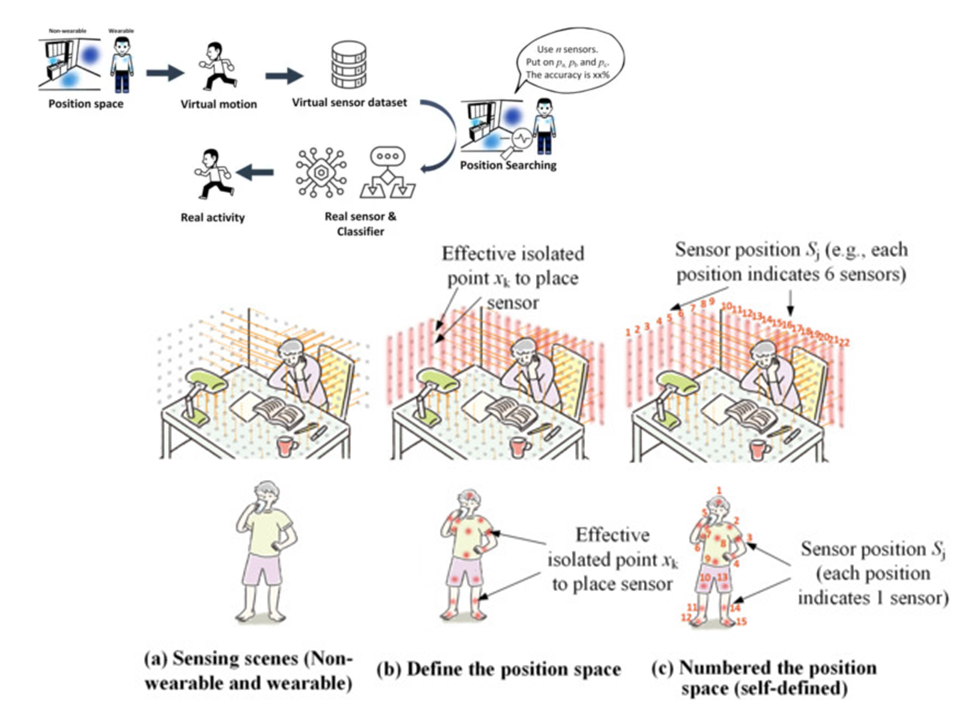バーチャルセンサデータを用いたセンサ配置と学習モデル生成の支援
Optimizing Sensor Position with Virtual Sensors in Human Activity Recognition System Design
2021
Chengshuo Xia,杉浦裕太
Chengshuo Xia, Yuta Sugiura
[Reference /引用はこちら]
Chengshuo Xia, Yuta Sugiura. Optimizing Sensor Position with Virtual Sensors in Human Activity Recognition System Design. Sensors. [DOI]
機械学習と組み合わせた人間行動認識(HAR)システムは、事前に決まっているセンサ位置のインタフェースに基づいてユーザにサービスを提供する。設置位置が変化すると認識性能が変化し、新たな学習データセットが必要となる。そのため、HARシステム設計におけるセンサ位置の役割を理解し、その効果を最適化する必要がある。本論文では、HARシステム開発に向けてバーチャルセンサデータを用いてセンサ配置の決定と学習モデル生成を支援する。このシステムは、与えられたセンサ数において、すべての可能な位置から最適なセンサ位置を生成することができる。また、バーチャルセンサデータを利用することで、学習データセットを低コストで利用することができる。本システムは、フィードバックを用いてセンサ位置選択の意思決定を高精度に支援するとともに、従来の学習モデルよりも低コストで分類器を出力することができる。
Human activity recognition (HAR) systems combined with machine learning normally serve users based on a fixed sensor position interface. Variations in the installing position will alter the performance of the recognition and will require a new training dataset. Therefore, we need to understand the role of sensor position in HAR system design to optimize its effect. In this paper, we designed an optimization scheme with virtual sensor data for the HAR system. The system is able to generate the optimal sensor position from all possible locations under a given sensor number. Utilizing virtual sensor data, the training dataset can be accessed at low cost. The system can help the decision-making process of sensor position selection with great accuracy using feedback, as well as output the classifier at a lower cost than a conventional training model.
